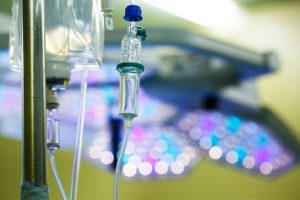Chemotherapy was first used to fight cancer in the 1940s. By the 1970s, chemotherapy drugs were being used to treat noncancerous health conditions, such as lupus, vasculitis, and autoimmune disorders. By the 1980s, the adverse health effects of chemotherapeutic agents on healthcare workers were well known enough to prompt the publication of the first recommendations for safe handling of these hazardous drugs.
By the 2000s, occupational health professionals understood that significant numbers of exposed healthcare workers lacked a clear understanding of the risks they face, and had no real dedication to the safe work practices that could reduce those risks.
Guidelines: The Latest and Greatest
That hasn’t stopped those pesky occupational health professionals from coming up with new and better guidelines. Most recently, the United States Pharmacopeial Convention (USP) drafted a new General Chapter <800> Hazardous Drugs—Handling in Healthcare Settings, which was scheduled to become enforceable on July 1, 2018. On September 29, 2017, the USP announced that it would postpone the official implementation date of chapter <800>. The purpose of the delay is to coordinate the implementation of Chapter <800> with upcoming revisions to existing General Chapter <797> Pharmaceutical Compounding—Sterile Preparations, which covers some topics that will now be covered instead by Chapter <800>. Both the new Chapter <800> and the revised Chapter <797> are expected to become effective now on December 1, 2019.
The new Chapter <800> covers hazardous drug compounding, which is why its official date has been adjusted to coincide with the revisions to the chapter on compounding. In compounding areas, there are extensive requirements for engineering controls, including containment and ventilation equipment. The containment requirements extend to personal protective equipment, which must not leave the compounding area. Hazardous drugs require dedicated compounding equipment; any equipment that comes into direct contact with hazardous drugs may not be shared with nonhazardous drugs, and equipment that does not come into direct contact with hazardous drugs must be deactivated, decontaminated, and cleaned before it is removed from the hazardous drug areas.
Workers may also be exposed to hazardous drug residues at many points in the life cycle of a hazardous drug besides compounding. New Chapter <800> addresses exposure prevention in all healthcare settings where workers are at risk of exposure, including pharmacies, hospitals and clinics, doctor’s offices, and veterinarian’s offices. It also applies to all workers who handle prepared hazardous drugs and any work area where hazardous drugs are received, stored, transported, or administered.
Despite the delay, the USP is encouraging affected organizations—healthcare facilities where hazardous drugs (HDs) are handled, manipulated, and administered—to forge ahead with adoption of the standard. The Convention does not expect to make any substantive changes to the standard, which was first published on February 1, 2016; only the effective date has changed.
USP General Chapter <800> is available as a free download directly from the USP.

